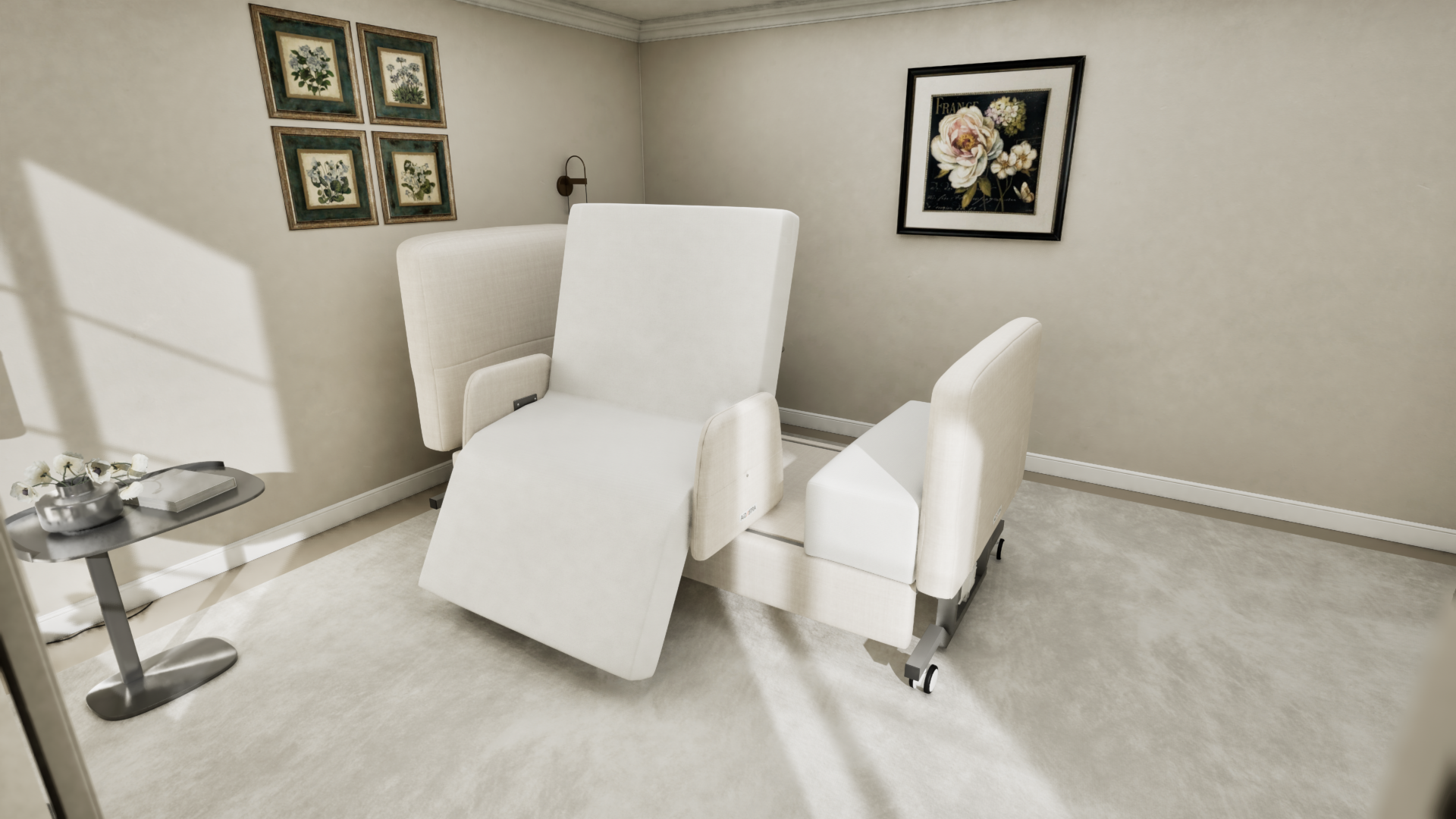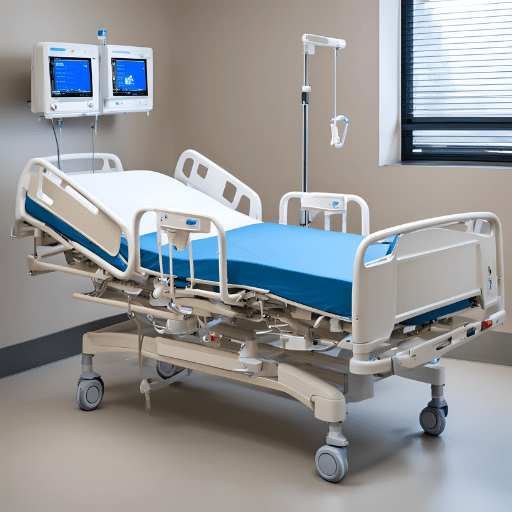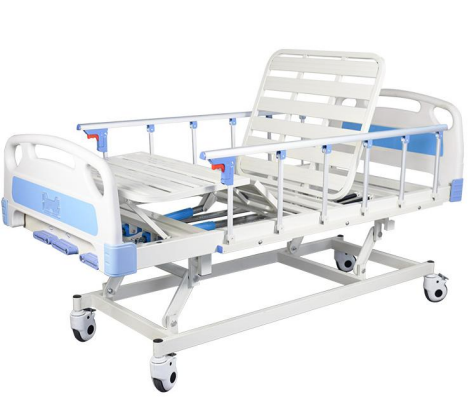Hospital Beds For Home Use - The Facts
Hospital Beds For Home Use - The Facts
Blog Article
Hospital Beds For Home Use Fundamentals Explained
Table of ContentsThe Main Principles Of Hospital Beds For Home Use 7 Simple Techniques For Hospital Beds For Home UseThe Hospital Beds For Home Use StatementsThe 5-Minute Rule for Hospital Beds For Home UseHospital Beds For Home Use - QuestionsExamine This Report on Hospital Beds For Home UseWhat Does Hospital Beds For Home Use Mean?
There are three primary kinds of hospital beds: manual, semi-electric, and fully-electric. These beds make use of hand cranks to change the bed's height and elevate and lower the head and the foot.
Semi-electric beds have an electrical motor to elevate and lower the head and foot sections of the bed (hospital beds for home use). Full-electric beds have an electrical motor that can raise the head and foot sections of the bed as well as the entire height and positioning of the bed.
A Biased View of Hospital Beds For Home Use
There are numerous kinds of hospital beds, each developed to meet details patient needs. Right here are some usual kinds: This is the most common type of health center bed, developed for basic clinical usage.
Lower to the ground than a common bed. This kind of bed is created for bigger patients, with a wider framework and higher weight capability than a common bed. This kind of bed is developed particularly for youngsters, with smaller sized dimensions than a typical bed. Unique attributes such as complete length side rails and animation design.
This sort of bed is made for critically ill clients who require open monitoring and specialized clinical equipment such as ventilators and mixture pumps. This type of bed is designed for use throughout labor and delivery, with adjustable placements and features to support the mom and baby during the birth process.
Hospital Beds For Home Use Fundamentals Explained
Multiple function and the devices do broadening grip to various parts of the vertebra and the extremities without moving the body. These are simply a couple of examples of the kinds of healthcare facility beds offered. The specific kind of bed made use of will certainly depend upon the client's problem, clinical needs, and other variables.
Here is the thing you require to understand. A one-function health center bed is a medical bed that allows a person to move only the head or foot section up or down. A 2 feature healthcare facility bed generally describes a type of clinical bed that has 2 flexible features to assist clients in health centers or treatment centers.

Getting The Hospital Beds For Home Use To Work
A 7-function ICU bed is a type of medical bed that gives a number of adjustable features to sustain seriously ill patients in a critical care unit (ICU) (hospital beds for home use). The 7 functions generally consist of: Back-rest modification: The back-rest can be gotten used to various angles to assist the client sit up or rest conveniently
Elevation adjustment: The bed can be increased or reduced to make it less complicated for individuals to enter and out of bed, and for caretakers to supply care. Trendelenburg placement: The whole bed can be slanted to advertise blood flow and circulation in the body. Reverse Trendelenburg setting: The bed can also be tilted in the contrary instructions to advertise blood circulation and flow in the upper body.
While even more cost effective than electrical versions, these beds need exertion for changes. The main benefits of manual beds are their affordability and reliability, as they don't rely upon electricity. The demand for manual effort can be a constraint in circumstances where quick adjustments are necessary or where caretakers face physical obstacles.
Hospital Beds For Home Use Things To Know Before You Get This
They are appropriate for patients that need marginal repositioning for convenience or clinical requirements. Semi-electric health center beds offer an equilibrium of handbook and electric controls. The head and foot areas are usually changed with electrical controls, while the elevation is adjusted manually. These beds give a perfect middle ground between manual and totally electrical choices, using simplicity of usage without the full price of electric models.
Semi-electric beds are fit for individuals that require modest adjustments to the head and foot areas yet can manage without frequent height changes. This makes them an economical option for those looking additional resources for comfort and convenience without the need for constant repositioning. Completely electrical medical facility beds feature electrical controls for seamless adjustments to the elevation, head, and foot sections.
Specialized medical facility beds, such as ICU beds, lasting care beds, and bariatric beds, are carefully created to address particular clinical demands. These beds supply tailored take care of varied individual groups, improving both results and comfort. In the adhering to areas, we will certainly explore the major sorts of specialty healthcare facility beds, detailing their particular advantages and applications.
With years of experience in making electrical straight actuators - hospital beds for home use and close partnership with the medical care sector, TiMOTION is well-positioned to provide trustworthy medical care additional reading options. Our vertically incorporated firm takes care of every action of the manufacturing process, from style to actuator assembly, guaranteeing we deliver phenomenal worth and tailored services tailored to your specific requirements
Getting My Hospital Beds For Home Use To Work

To get more information about integrating these modern technologies into your products, contact us today. More analysis:.
Information is sourced from the Medicare Expense Record.

The Ultimate Guide To Hospital Beds For Home Use
A medical facility bed is a bed developed especially for clinical purposes. It is not only a place for clients to rest, yet additionally a system for clinical procedures. Unlike normal home beds, health center beds generally have flexible attributes, which can facilitate clinical personnel to make different changes according to the requirements of clients, such as changing the elevation, disposition, and support angle of the back and legs of the bed.
Report this page